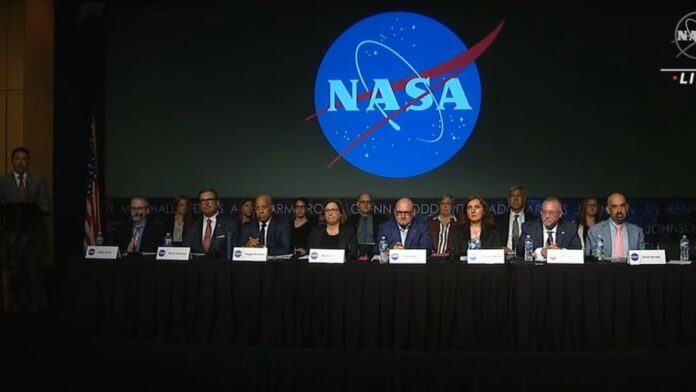NASA held the first public meeting to discuss the findings of its UAP independent study team today (May 31).
The group, formed in June 2022, aims to examine data related to unidentified anomalous phenomena (UAP), a new term that encompasses objects or incidents in the sky, underwater or in space that can’t be immediately identified. The group, which has $100,00 in funding, includes former astronaut Scott Kelly and 15 other investigators from a wide variety of fields including astronomy, oceanography and even journalism.
During the opening remarks in today’s hearing, team members stressed that the biggest roadblock in terms of understanding these unidentified phenomena is a lack of data. Nevertheless, NASA’s Daniel Evans, assistant deputy associate administrator for research within the agency’s Science Mission Directorate, noted that, because public interest in UAP is at a seeming all-time high, it is NASA’s responsibility to give the topic the “rigorous scientific scrutiny” it deserves.
“First and foremost, it provides an opportunity for us to expand our understanding of the world around us,” Evans said. “This work is in our DNA.”
Related: How big a deal is NASA’s new UFO study?
Evans stressed that the study is first and foremost about gaining a larger understanding of what is in the air and making the skies safer. “It’s this nation’s obligation to determine whether these phenomena pose any potential risks to airspace safety,” Evans said.
Nicki Fox, associate administrator for NASA’s Science Mission Directorate, said that the UAP independent study team was commissioned “to create a roadmap on how to use the tools of science to evaluate and categorize the nature of UAPs going forward. This roadmap, of course, will help the federal government obtain usable data to explain the nature of future UAPs.”
Fox noted, however, that accessing high-quality data is difficult because the sensor platforms used to capture data are often classified.
“If a fighter jet took a picture of the Statue of Liberty, then that image would be classified not because of the subject in the picture, but because of the sensors on the plane,” Fox said.
She stressed the need for high-quality unclassified data, which “make it possible for our team to communicate openly to advance our understanding of UAP not only with each other, but across the scientific community and to the public.”
Astrophysicist David Spergel, chair of the study group and former member of the NASA Advisory Council, echoed that sentiment, adding that the “current data-collection efforts regarding UAPs are unsystematic and fragmented across various agencies, often using instruments uncalibrated for scientific data collection.”
Sean Kirkpatrick, director of the Pentagon’s All-Domain Anomaly Resolution Office (AARO), agreed, saying that, while most UAP reports the office reviewed are easily explained, some do still remain unresolved “primarily due to a lack of data associated with those cases.”
One of the more disheartening moments in the opening statements came as both Fox and Evans pointed out that many members of NASA’s UAP study group have been subject to harassment as a result of their involvement.
“A NASA security team is actively addressing this issue,” Evans said. “We at NASA are acutely aware of the considerable public interest in UAP. However, it’s critical to understand any form of harassment towards our panelists only serves to detract from the scientific process, which requires an environment of respect and openness.”
Today’s meeting will include presentations from the U.S. Federal Aviation Administration and several experts who are members of the independent study team. A virtual post-meeting media teleconference will follow at 3 p.m. ET (1900 GMT), an audio stream of which will be available on NASA TV.

